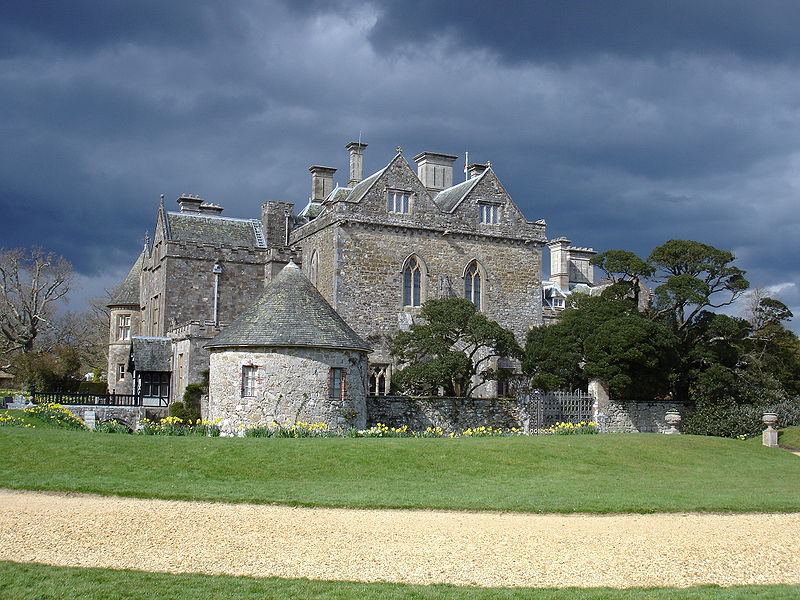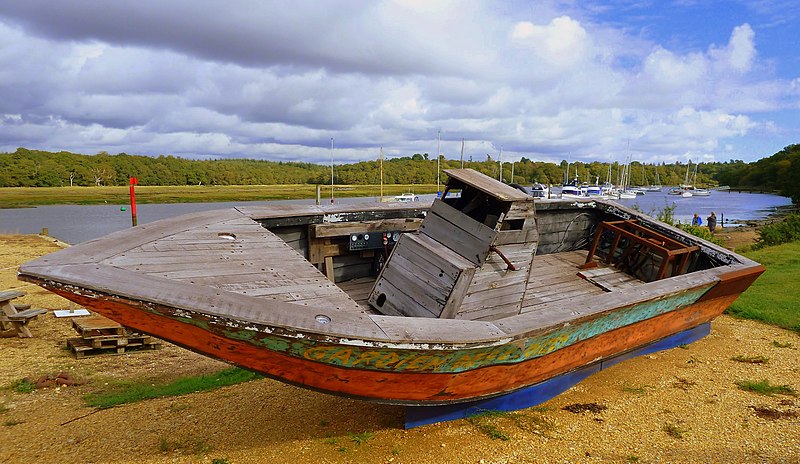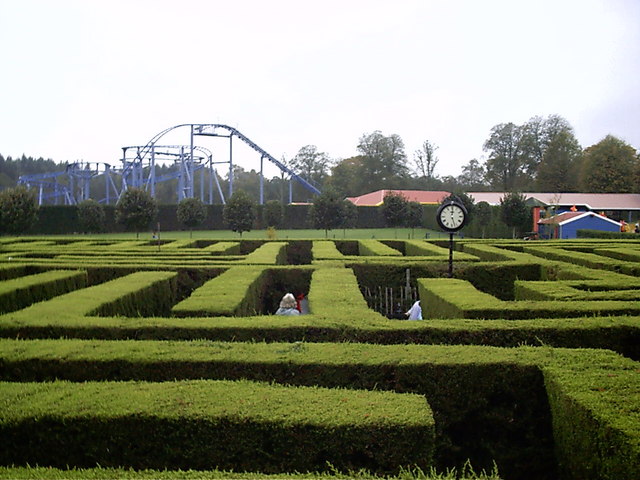The New Forest is one of Britain’s treasures – a National Park located mostly in the county of Hampshire (with a little bit in Wiltshire and Dorset). You may remember it was created in 1079 by William the Conqueror, for his deer hunting pleasure. Alas, though – not only were houses and small towns snatched to create it, but two of William’s sons died in the forest (Prince Richard and King William (Rufus) II, in 1081 and 1100, respectively). You can see the Rufus Stone, marking where he mysteriously died.
Death of William Rufus of England. Alphonse Marie-Adolphe de Neuville (1835-1885), Ridpath's Universal History, Copyright 1895, Section XII, page 644. Public Domain.
The lands of the New Forest are extraordinarily beautiful, and there is plenty to do – more than you think! Plan your stay around your home base – perhaps Hampshire cottages in the New Forest – and then jaunt around, exploring the things that interest you.

"River Meanderings in New Forest Gravel" was created by the sand artist from a photograph to create a permanent picture using sterilised natural coloured sands (with no artificial colours) as 'paint' - bird feathers as 'brushes' and other recycled and 'found' materials and fixed in place using non-toxic adhesives.Dimensions (unframed) 24" by 22 " (61cms by 56cms). Wikimedia Commons: The Sandpainter
So what can you do, when visiting the New Forest?

Huntsman on the edge of Pig Bush, New Forest The scarlet coat of this huntsman shows that he is an elected member of the New Forest Hunt Club. It is certainly a colour that contrasts well with the muted greys, greens and browns of the New Forest heathland on a drizzly winter afternoon. This view is looking out from the edge of the trees at Pig Bush towards Shepton Water and Pebble Ford. Wikimedia Commons: Jim Champion
The New Forest Museum
Located in Lyndhurst, the heart of the National Park, this official Museum and Visitor Centre has all the information you’ll need to find out what to see, opening hours, and discover local treasures. More info: http://www.newforestcentre.org.uk/

Wikimedia Commons: Trevor Harris
New Forest Wildlife & Woodland
Well, you will see New Forest Deer, New Forest Ponies, New Forest Cows, New Forest Pigs, Reptiles, Birds, Donkeys, and more on your perambulations. You can also roam the ancient Woodlands, or go birdwatching.

Entering the site of the Churchyard medieval hunting lodge, New Forest All that remains of the medieval "Churchyard" royal hunting lodge is a rectangular bank and external ditch on the gravel ridge south of the Sloden Inclosure. The view above is looking along the later trackway that bisects and disturbs the earthworks. The fallen leaves in the foreground are collected in the infilled ditch and the low grassy bank in the foreground is on the western edge of the site. Nothing remains of the hunting lodge that probably stood on this site - originally the site was thought to be a cattle inclosure but it is almost identical to other nearby known hunting lodge sites. The lodges provided temporary accommodation for visiting royalty or nobility. Many of these abandoned earthworks in the Forest have attracted "Church" placenames - this site certainly has a lot of yew trees within its banks. Wikimedia Commons: John Champion
Walks, Bike Trails, and Guided Tours
There are many walks that you can take, including Anderwood, Blackwater, Bolderwood, Bolton’s Bench, Knightwood Oak, Moors Valley, The Rufus Stone, Whitefield Moor, Wilverley Barbecue, and Wilverley Plain. You can also bike along different cycling routes, and take guided walks.
Prefer the beach?
Take the Beach Bus to Lepe Country Park, where you can enjoy a mile-long beach, stunning cliffs, and inspiring views. The Bus also runs to Lymington and stops at popular attractions (Exbury Gardens, National Motor Museum at Beaulieu, Buckler’s Hard – more on those in a minute).

Lepe Country Park. A view from the Solent View car park at Lepe Country Park. A popular place in the summer, with views across the north Solent to the Isle of Wight. Wikimedia Commons: Jim Champion

One of several kite surfers in the lee of Hurst Spit with the Isle of Wight just visible behind. Photo Wikimedia Commons: ValP

Yacht leaving the Beaulieu River This boat is on the final stretch of the Beaulieu River, between Needs Ore Point and Lower Exbury, on its way out to the Solent. The tower in the background is at Lower Exbury House. Wikimedia Commons: Jim Champion
Beaulieu
Beaulieu is both a village in the southeastern corner of the New Forest National Park, and a celebrated estate. The Beaulieu Estate includes the National Motor Museum, Palace House, and the Beaulieu Abbey. You’ll want to visit all 3, while you’re there – it’s extraordinary.

Wikimedia Commons: David Hunt
Buckler’s Hard
Buckler’s Hard is a historic 18th century village with a shipbuilding yard. You can take a cruise, or a guided walk, or explore the lovely town on your own.

Described as an 'indigenous boat', Daniel Craig is seen driving this boat in a high speed chase. In fact a stunt driver was hidden in a compartment in front of the steering wheel. It is seen here at Buckler's Hard where it was on display to coincide with an exhibition of Bond vehicles at the nearby National Motor Museum at Bealieu. Wikimedia Commons: Jason Ballard
Buckler’s Hard Marina. Wikimedia Commons: Remi Jouan
Hurst Castle
Hurst Castle is located on Hurst Beach, which separates the Solent from the Keyhaven mudflats (take note of those mudflats, if you love birding!). This castle dates back to King Henry VIII, and is now a museum. You can take the guided audio tour here, which helps fund the restoration.

Hurst Castle. Taken from the Hurst Castle ferry which operates from Keyhaven. Wikimedia Commons: Clive Perrin
Paulton’s Park
The only theme park in the area, there are over 50 rides and attractions here. Your kids will love Peppa Pig’s World, while you might prefer the gardens, lake, and variety of animals there (penguins! Meerkats! Giant Tortoises!).

The maze from the viewing platform at Paulton's Park. Wikimedia Commons: ValP
But there's more...archaeology, history, spas, shopping, markets, fishing, horseback riding, seeing animals of all types, gardens, and more await you in the New Forest. What will you do first?

B3056 road at dusk, Stephill Bottom, New Forest Looking along a very straight portion of the B3056 road between Lyndhurst and Beaulieu. In the foreground the road crosses Stephill Bottom and climbs up to Furzy Brow. There is a Bronze Age burial mound on the horizon towards the left of the photo, at grid reference SU355058. There is also a linear earthwork, just visible to the left of the road halfway up the hill. Wikimedia Commons: Jim Champion



